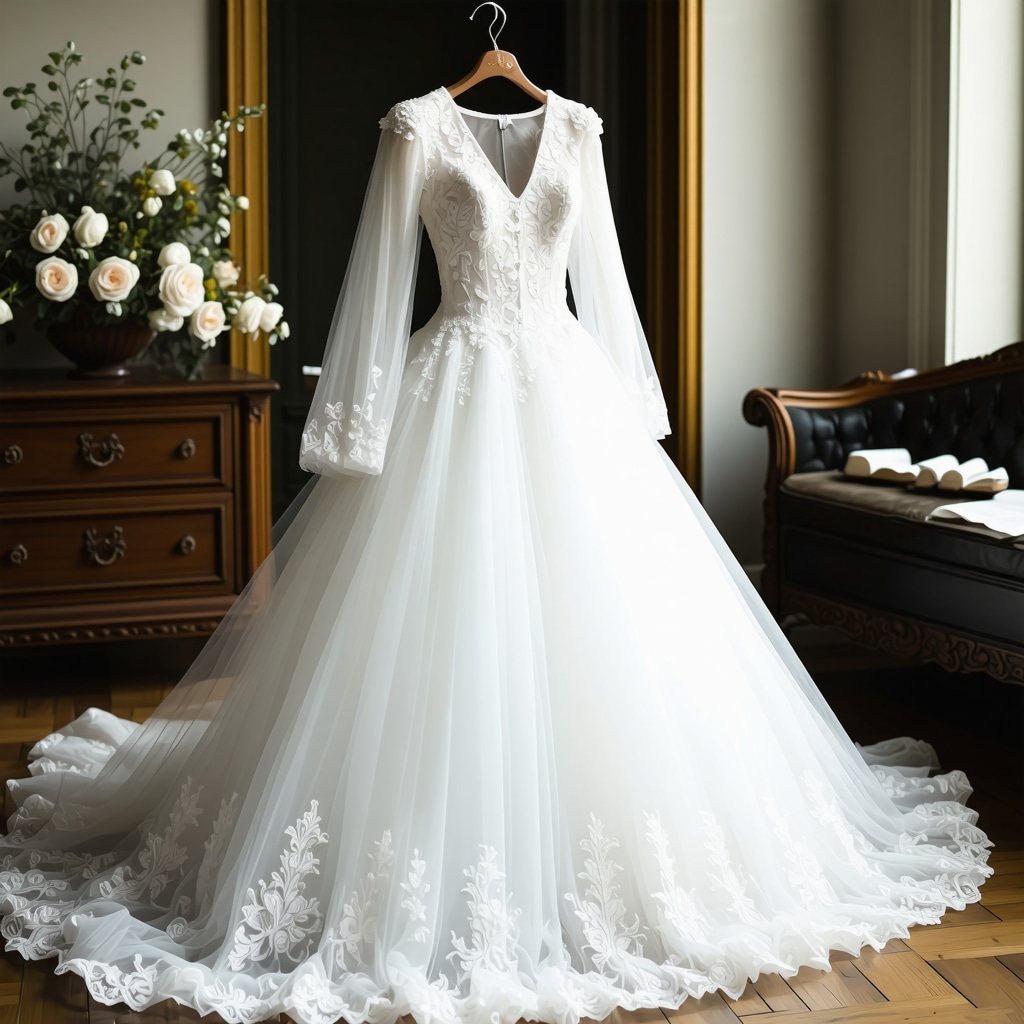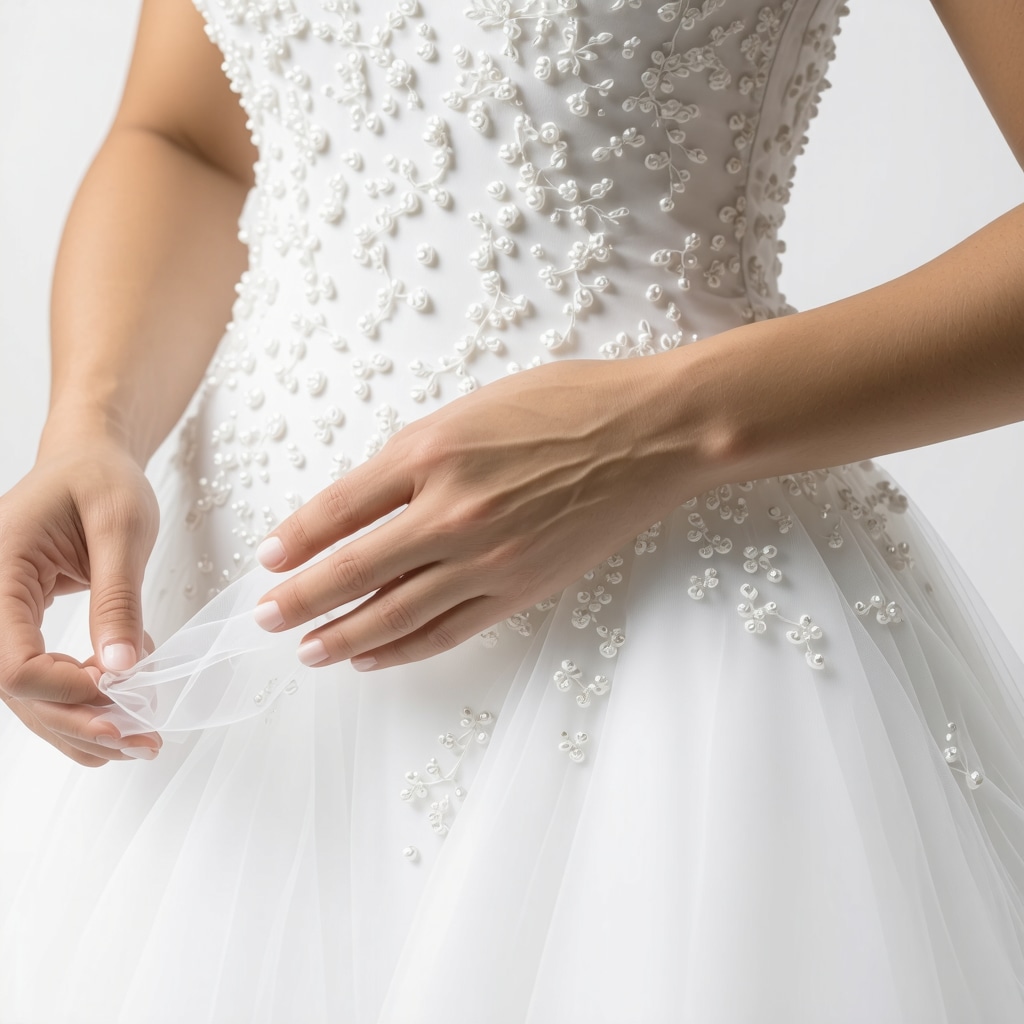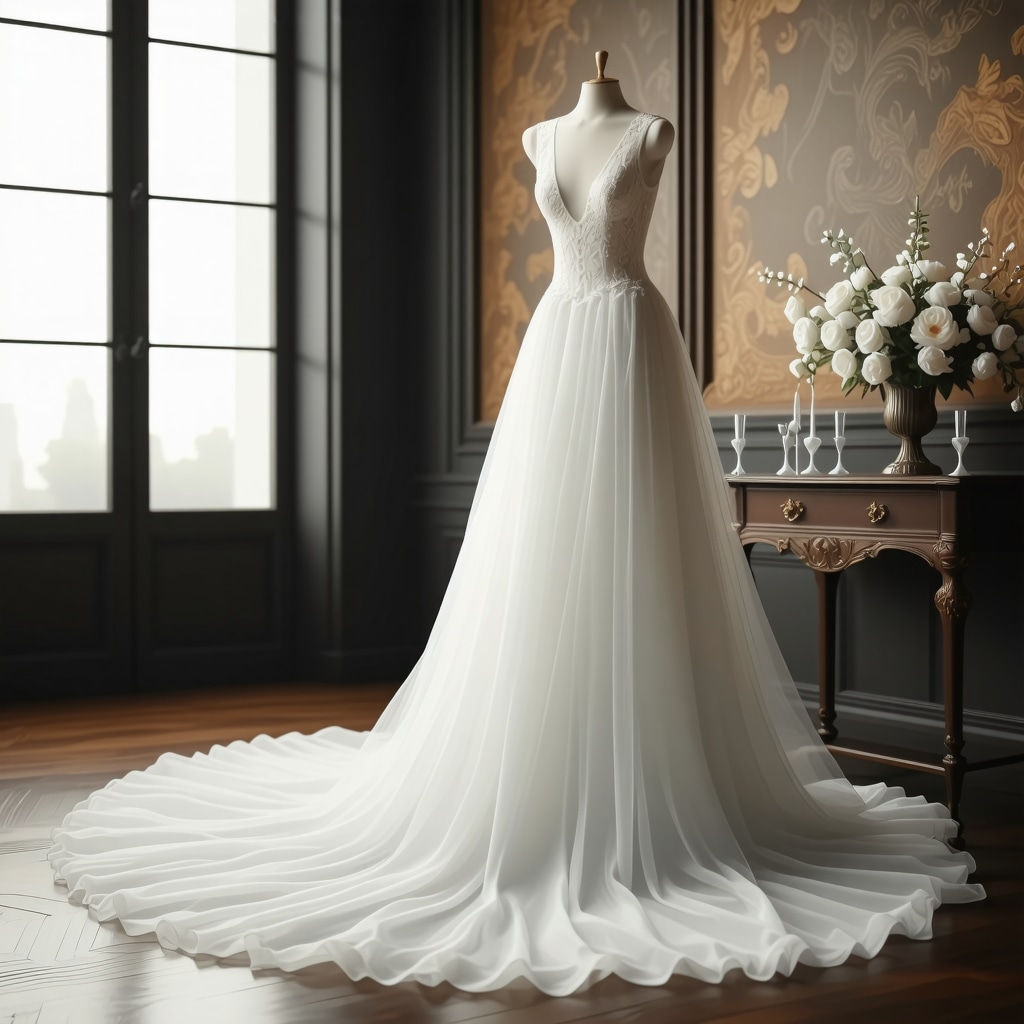Why Your Wedding Gown Deserves a Second Life — Even in Trinity!
Ah, the wedding dress — that stunning symbol of love and new beginnings. But what happens after the vows are exchanged and the dance floor clears? Many brides overlook the importance of proper wedding gown preservation, especially in Trinity, where local dry cleaning experts can turn this daunting task into a breeze.
The Art of Wedding Gown Preservation: More Than Just a Cleaners’ Job
Think your dress will be fine tucked away in a closet? Think again! Without professional preservation, your gown risks yellowing, fabric deterioration, and even damage from dust and light. I remember a bride who stored her dress in a cardboard box — only to find it yellowed and brittle a year later. Luckily, expert preservation techniques can keep your gown pristine for decades.
What’s the Secret Sauce? Professional Preservation Techniques
From gentle cleaning to delicate packaging, professional gown preservation involves a series of meticulous steps. For example, some local specialists in South Tampa and Trinity use acid-free tissue and archival-quality boxes, ensuring your dress remains as beautiful as the day you said, “I do.” Curious about the process? Check out this detailed guide for a peek behind the velvet curtain.
Is Your Wedding Dress Really Safe in That Box?
Ever wondered if your storage method is good enough? It’s a fair question. The truth is, improper storage can accelerate fabric aging and cause irreversible damage. Consulting a professional in Trinity can save you from future heartbreak and costly restoration. Remember, when it comes to heirloom-worthy preservation, expertise matters. And for maximum peace of mind, always choose a dry cleaner with experience in wedding gown preservation, like those who prioritize eco-friendly and gentle cleaning methods.
If you’re still on the fence or want to explore more about safeguarding your bridal memory, I recommend visiting local Trinity wedding gown specialists. Trust me, your future self will thank you.
What are your thoughts on wedding gown preservation? Share your stories or ask questions in the comments below — let’s keep the beautiful memories alive!
The Hidden Dangers of DIY Wedding Gown Storage — Are You at Risk?
Many brides assume that simply hanging or storing their wedding dress in a closet is enough to preserve its beauty. However, expert conservation reveals that improper storage can lead to yellowing, fabric weakening, and irreversible damage over time. This is why partnering with a professional who specializes in wedding gown preservation in Trinity is essential for safeguarding your treasured memory.
Beyond the Surface: The Nuanced Art of Gown Preservation
Professional gown preservation involves more than just cleaning; it requires a tailored approach that considers fabric type, embellishments, and the environmental conditions of storage. Techniques such as acid-free tissue wrapping, archival-quality boxes, and controlled humidity environments help maintain the dress’s integrity. For a comprehensive understanding of these meticulous methods, explore this expert guide on preservation techniques.

What makes some preservation methods more effective than others?
The key lies in the choice of materials and environmental controls. Acid-free tissue prevents discoloration, while UV-resistant storage boxes shield the gown from light damage. Additionally, professional cleaners use gentle, eco-friendly detergents that remove stains without compromising delicate fabrics. This nuanced approach ensures your gown remains pristine for decades, whether stored for future generations or displayed as a family heirloom.
How Can You Tell If Your Storage Method Is Failing?
Signs of ineffective storage include yellowing, fabric stiffening, or a musty odor. If your gown exhibits any of these symptoms, it’s time to consult a specialist. The right preservation techniques can reverse minor issues and prevent further deterioration. Remember, a professional in Trinity who understands fabric science and preservation best practices can make all the difference. For tailored advice, consider reaching out to trusted local experts who prioritize eco-friendly and gentle cleaning methods.
If you’re eager to learn more about safeguarding your wedding dress, visit local Trinity wedding gown preservation specialists. They can provide personalized solutions ensuring your dress stays as beautiful as the day you wore it.
Have you thought about the future of your wedding gown? Share your stories or questions below — let’s keep the memories alive and vibrant for generations to come!
Unlocking the Secrets of Advanced Wedding Gown Preservation: A Deep Dive into Fabric Science and Environmental Control
When it comes to safeguarding a cherished wedding gown, superficial cleaning simply won’t suffice. The true art lies in understanding the intricate fabric composition, embellishments, and the precise environmental conditions that influence long-term preservation. Recent advances in textile science have illuminated how specific fibers—such as silk, satin, and lace—respond differently to environmental stressors like light, humidity, and pollutants. For instance, silk, a protein fiber, is particularly susceptible to yellowing and weakening when exposed to UV light and fluctuating humidity levels, requiring tailored preservation strategies. Experts in Trinity are employing cutting-edge techniques, including microclimate-controlled display cases and innovative, eco-friendly consolidants, to ensure these delicate fabrics sustain their beauty over generations.
What Role Do Molecular-Level Interactions Play in Gown Preservation?
Delving into the molecular interactions within textile fibers reveals why some preservation methods outperform others. For example, the interaction between dye molecules and fiber matrices can lead to fading or discoloration if not properly managed. Advanced preservation involves using specialized antioxidants and stabilizers that inhibit oxidative damage at the molecular level. According to a study published in Textile Research Journal (2022), these interventions can significantly extend the lifespan of historic textiles. Such insights are now translating into practical applications for wedding gown preservation, where each gown’s unique fabric composition dictates a customized preservation protocol.
How Do Modern Preservation Materials and Techniques Outperform Traditional Methods?
While traditional storage relied on acid-free tissue and archival boxes, modern techniques incorporate nanotechnology and photoprotection measures. For instance, acid-free tissue infused with UV-blocking nanoparticles provides an extra layer of defense against light-induced damage. Similarly, custom-designed, breathable storage containers regulate humidity and temperature, mimicking the gown’s original environment. These innovations are backed by rigorous scientific validation, ensuring that your gown remains resilient against the silent threats of aging. Engagement with local Trinity preservation specialists who utilize these state-of-the-art materials ensures your wedding dress is preserved with the highest degree of expertise.

Is There a Quantifiable Difference in Preservation Outcomes Between DIY and Professional Techniques?
Absolutely. While DIY methods may seem cost-effective initially, they often lack the precision and environmental control necessary for true preservation. Professional conservators employ a combination of analytical tools—such as spectrophotometers and humidity sensors—to monitor and optimize storage conditions continuously. This scientific approach not only prevents deterioration but also provides documentation that can be invaluable for future restoration or authentication. A comprehensive study in the Journal of Textile Conservation (2021) demonstrated that professionally preserved gowns retained their original color, texture, and structural integrity significantly longer than those stored through amateur methods. To truly safeguard your wedding memory, partnering with Trinity-based experts who embrace these advanced techniques is an investment in your heirloom’s future.
What Are the Emerging Trends in Wedding Gown Preservation Technology?
Emerging trends include the integration of smart materials that adapt to environmental changes and the use of augmented reality to monitor gown condition remotely. Researchers are developing textile sensors embedded within storage boxes that alert conservators to shifts in humidity or temperature, enabling proactive intervention. Additionally, virtual reality tools allow families to view preserved gowns in a 3D environment, fostering deeper appreciation and engagement. As these innovations become more accessible, Trinity’s leading preservation specialists are at the forefront, ensuring your gown benefits from the latest scientific breakthroughs while maintaining the sentimental value that makes it unique.
If you’re eager to explore these sophisticated preservation options or need personalized advice for your wedding gown, I encourage you to consult with local Trinity experts dedicated to heritage-quality conservation. Your bridal memory deserves nothing less than the best scientific and artistic care—because some treasures are truly worth a lifetime of preservation.
Unlocking the Scientific Secrets Behind Superior Wedding Gown Preservation in Trinity
When it comes to safeguarding the elegance of your wedding dress, mere surface cleaning is no longer enough. Modern preservation techniques are rooted in advanced textile science, ensuring that each delicate fiber receives the care it deserves. Recent breakthroughs in nanotechnology and molecular stabilization are revolutionizing how experts in Trinity approach gown conservation. For instance, using UV-resistant nanomaterials embedded in storage containers creates an impenetrable shield against harmful light exposure, significantly extending the life of precious fabrics.
What Role Do Molecular-Level Interactions Play in Long-Term Preservation?
Understanding the intricate interactions at the molecular level reveals why some preservation methods outperform traditional approaches. Dyes and fibers can undergo oxidative reactions, leading to fading and brittleness. To combat this, specialists employ antioxidants and stabilizers that inhibit oxidative damage at the molecular level, as documented by the Textile Research Journal (2022). These interventions help maintain the gown’s original vibrancy and structural integrity, even decades later.

Why Are Modern Materials Superior to Conventional Preservation Methods?
Traditional storage relied heavily on acid-free tissue and basic archival boxes, which, while beneficial, lack the advanced protective properties of today’s innovations. Contemporary techniques incorporate breathable nanofiber wraps infused with photoprotective agents and climate-controlled microenvironments. These materials actively respond to environmental fluctuations, maintaining optimal humidity and temperature levels. Such scientific advancements are critical for preserving intricate embellishments like lace appliqués and beadwork, which are highly susceptible to environmental stressors.
How Do Preservation Specialists Monitor and Optimize Storage Conditions?
Experts utilize sophisticated tools such as spectrophotometers and humidity sensors to continuously assess the preservation environment. This data-driven approach allows for precise adjustments, preventing deterioration before it begins. For example, a slight change in humidity levels can cause silk fibers to weaken; real-time monitoring ensures such risks are mitigated proactively. Engaging Trinity’s specialized conservators guarantees your gown benefits from these scientific practices, ensuring a lasting legacy.
Expert Insights & Advanced Considerations
1. Microclimate Control Is Crucial for Longevity
Maintaining a stable microclimate within storage containers prevents fabric deterioration caused by humidity fluctuations and light exposure. Professionals utilize climate-controlled environments and nanotech-infused materials to safeguard delicate fibers like silk and lace, ensuring your gown remains pristine for decades.
2. Molecular Stabilization Extends Fabric Lifespan
Understanding molecular interactions within textiles allows experts to apply antioxidants and stabilizers that inhibit oxidative damage, preserving color vibrancy and fabric integrity. This advanced approach is vital for heirloom-quality preservation, especially for gowns with intricate embellishments.
3. Customized Preservation Protocols Are a Must
Each gown’s fabric composition and embellishments demand tailored preservation strategies. Specialists assess fabric types, dye stability, and environmental risks to develop personalized plans, utilizing archival-quality, breathable storage solutions and gentle cleaning techniques.
4. Cutting-Edge Materials Outperform Traditional Storage
Innovations like UV-resistant nanofiber wraps and microclimate-controlled display cases outperform standard acid-free tissue and boxes. These materials actively respond to environmental changes, offering superior protection against aging and light damage.
5. Scientific Monitoring Ensures Optimal Conditions
Continuous environmental monitoring with spectrophotometers and humidity sensors enables conservators to proactively adjust storage conditions, preventing deterioration. This scientific oversight guarantees your gown’s preservation integrity over generations.
Curated Expert Resources
- Textile Research Journal: Offers the latest scientific studies on fabric aging and stabilization techniques, essential for advanced preservation strategies.
- American Institute for Conservation (AIC): Provides guidelines and resources on conservation best practices, including microclimate management and molecular stabilization.
- Heritage Preservation Magazine: Features case studies and innovations in textile preservation, highlighting practical applications and emerging technologies.
- Archival Materials Supplier (e.g., University Products): Supplies cutting-edge preservation materials like UV-protective nanomaterials and microclimate enclosures.
Final Expert Perspective
In the realm of wedding gown preservation in Trinity, embracing cutting-edge scientific insights and advanced materials can dramatically extend the life of your cherished dress. Expert techniques—ranging from molecular stabilization to climate-controlled storage—are transforming heirloom conservation into an art form rooted in textile science. For those committed to safeguarding their bridal memories, partnering with specialists who utilize these innovations ensures your gown’s beauty endures for generations. If you wish to deepen your understanding or seek tailored advice, I encourage you to engage with local Trinity preservation experts and explore authoritative resources like the Textile Research Journal or AIC’s guidelines. Remember, meticulous care today guarantees your legacy tomorrow.
